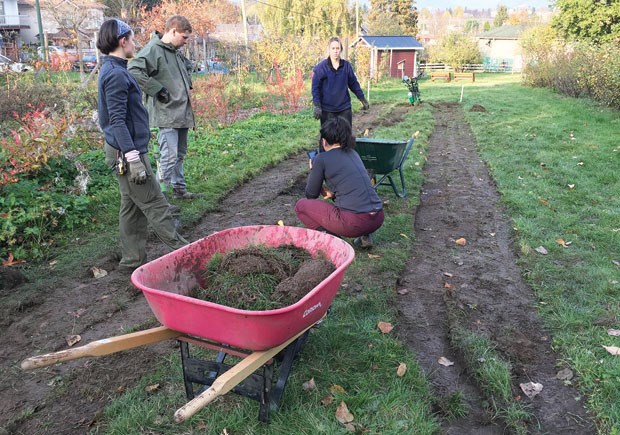There are close to 3,000 farms and hundreds of community gardens in Metro Vancouver that rely on native bees for food crop yield and quality. But with native bee populations declining across North America, Metro Vancouver is at risk of becoming one of many communities to face the challenge of sustaining local food production in the future.
To make matters worse, public awareness of the role of native bees in crop pollination and climate adaptation is low, as are strategies to bolster native bee numbers. While not all factors contributing to the decline are understood, conserving biodiversity through natural habitat restoration has been proven to support bee diversity and abundance and measurably increase crop production.
In an effort to increase public education while enhancing local habitat and bee forage, the Environmental Youth Alliance Society launched the Nectarscape Project.
With funding through the Bee BC Program, the project engaged 30 youth volunteers, including Indigenous youth, to transform uncultivated areas of food-producing community gardens into native wildflower strips, or nectarscapes.
“The plantings will provide floral and nesting resources for both native and honey bees, which will conserve bee biodiversity to support crop pollination, enhance the climate-resilience of local urban farms and support a sustainable food system in B.C.,” explains project coordinator Emily Keller.
During two eight-week programs the volunteers learned to identify Western honey bees and 56 species of native bees present in the Lower Mainland, as well as characteristics of different bee species and bee-supporting native plants, and how to seed and grow nectar/pollen-rich native wildflowers. A 10 square metre native wildflower strip was then planted at four prominent food-producing community gardens.
According to Keller, cost-effectiveness is one of the many benefits the nectarscape technique offers.
“This project will share knowledge of an affordable way to create new bee forage that supports climate-resilient urban farms and community gardens,” she says. “Native wildflower seeds are relatively inexpensive compared with other forage-enhancing practices, providing an affordable management practice to support bee health.”
The Environmental Youth Alliance Society plans to maintain the new bee forage for the next three years, while sharing information with site partners and other urban farms and gardens. Forage management will then be transitioned to local farmers and community gardeners who have received training.
For Keller, the project has contributed to bee health in several ways and made a significant impact on participants, many of whom reported new appreciation and knowledge of bees, and a desire to continue creating urban bee habitat.
“It has encouraged local youth to be ambassadors for bee health, directly created new bee foraging areas and developed a new native wildflower seed mix that can be shared and used to create additional foraging areas,” she reports.
While it is too early to fully assess the impact of the project, phase two will engage youth to monitor how successfully the meadows established and the impact of the meadows on different bee species.
“That said,” adds Keller, “existing science shows that creating wildflower strips does benefit bee biodiversity.”
This project is supported by the Bee BC Program; delivered by the Investment Agriculture Foundation of BC with funding from the provincial government.
Article courtesy Investment Agriculture Foundation of BC



